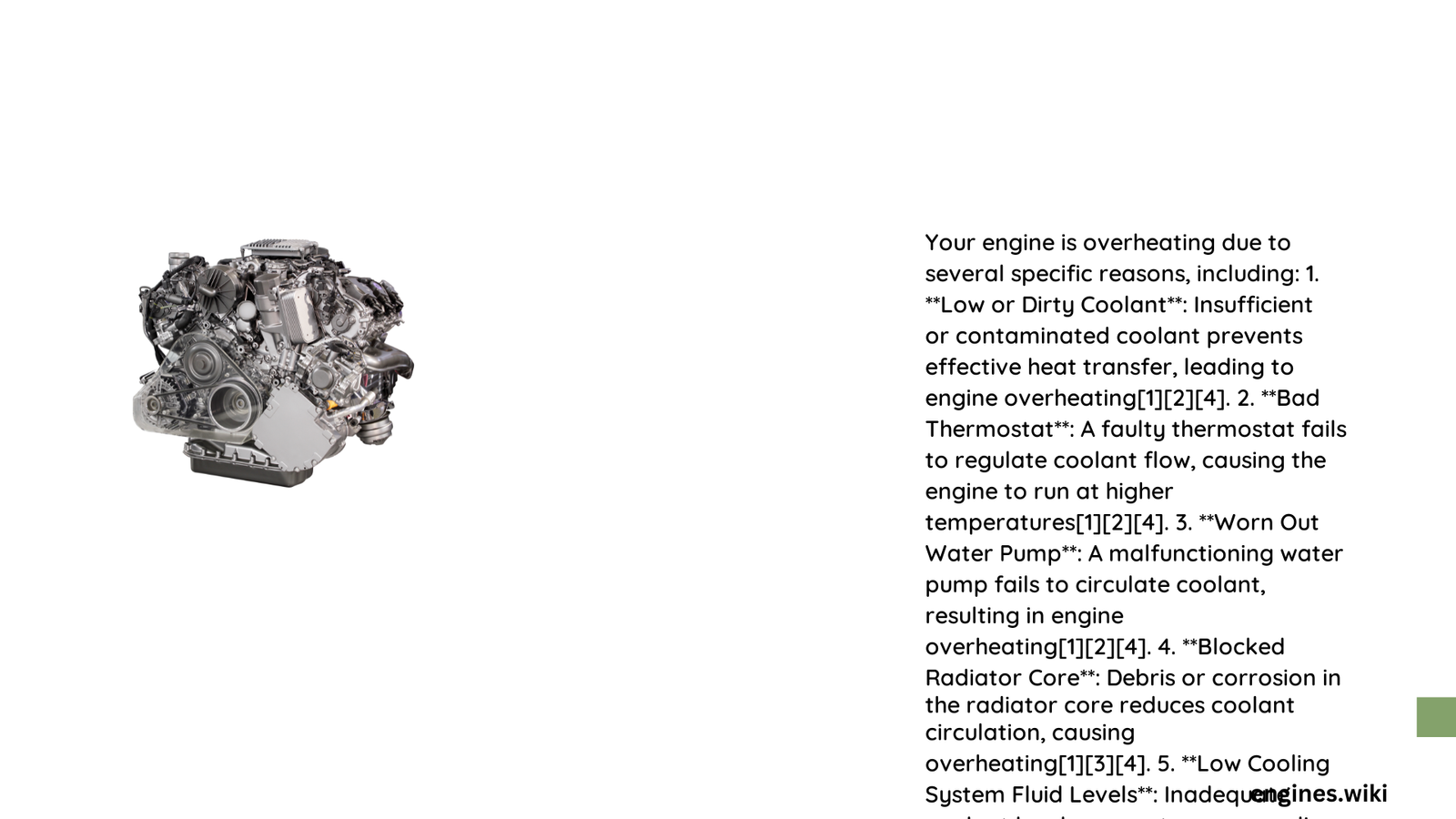Engine overheating is a critical automotive issue that can lead to catastrophic mechanical failure if not addressed promptly. When your vehicle’s temperature gauge consistently rises above normal operating range, it signals potential systemic problems within the cooling infrastructure. Understanding the root causes, from coolant leaks to thermostat malfunctions, becomes paramount in preventing expensive engine repairs and maintaining optimal vehicle performance.
What Causes Persistent Engine Overheating?
Why Do Coolant Leaks Trigger Overheating?
Coolant leaks represent a primary culprit in engine overheating scenarios. These leaks can occur through multiple critical system components:
| Component | Potential Leak Indicators | Severity |
|---|---|---|
| Radiator | Visible puddles, corrosion | High |
| Hoses | Visible cracks, soft spots | Medium |
| Water Pump | Coolant residue, grinding noise | Critical |
| Expansion Tank | Visible fractures | Moderate |
Key Diagnostic Steps for Coolant Leaks
- Visual Inspection
- Check for green/orange liquid underneath vehicle
- Examine hoses for visible deterioration
-
Inspect radiator for physical damage
-
Pressure Testing
- Determine exact leak location
- Measure system pressure integrity
- Identify potential hidden vulnerabilities
What Role Does Thermostat Play in Engine Temperature?
The thermostat acts as a critical temperature regulation mechanism. When malfunctioning, it disrupts entire cooling system performance:
- Stuck Closed: Prevents coolant circulation
- Stuck Open: Reduces engine’s ability to reach optimal temperature
- Normal Range: 195°F to 220°F (90°C to 104°C)
How Can Water Pump Failures Contribute to Overheating?
Water pump dysfunction directly impacts coolant circulation:
- Symptoms:
- Unusual grinding noises
- Coolant leakage near pump
-
Inconsistent temperature readings
-
Performance Metrics:
- Optimal flow rate: 1-3 gallons per minute
- Reduced circulation leads to rapid temperature increase
What Indicates Radiator Blockage?
Radiator blockages can severely compromise cooling efficiency:
- Detection Methods:
- Pressure testing
- Flow rate measurements
-
Visual sediment inspection
-
Potential Blockage Consequences:
- Reduced coolant circulation
- Accelerated engine wear
- Potential catastrophic failure
Preventative Maintenance Strategies

Recommended Actions
- Regular coolant system inspections
- Timely replacement of aging components
- Use of recommended coolant specifications
- Annual pressure testing
Expert Recommendations
- Monitor temperature gauge consistently
- Address minor leaks immediately
- Maintain proper coolant levels
- Use high-quality coolant
Pro Tip: Most overheating issues are preventable with routine maintenance and early intervention.
Conclusion
Understanding why your engine keeps overheating requires systematic diagnostic approach. By recognizing early warning signs and implementing proactive maintenance, you can significantly extend your vehicle’s operational lifespan.
